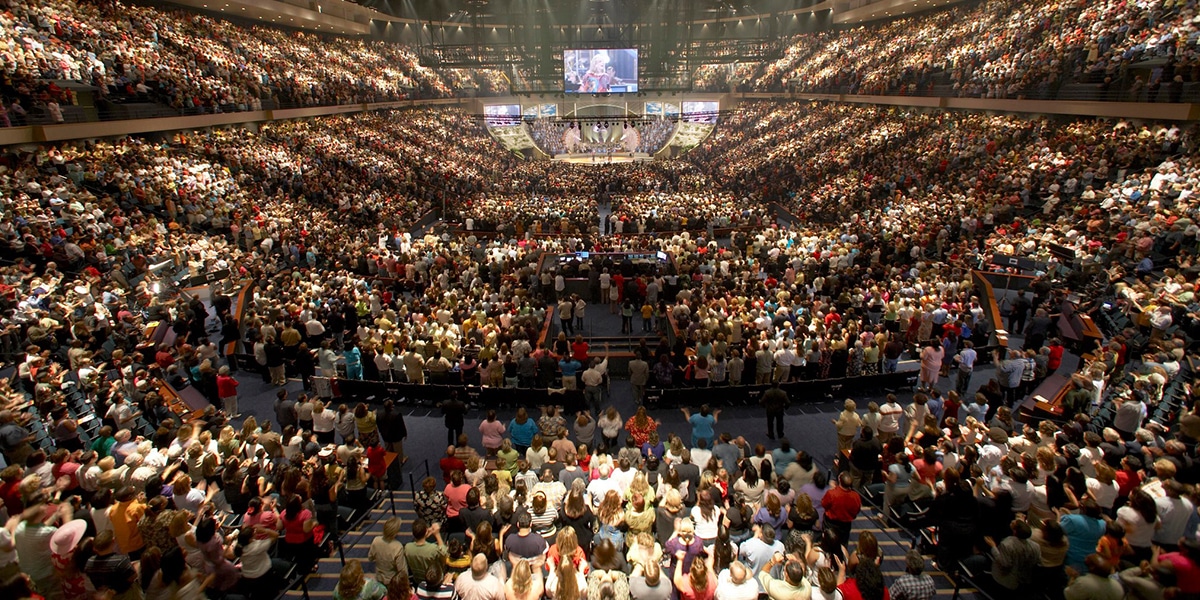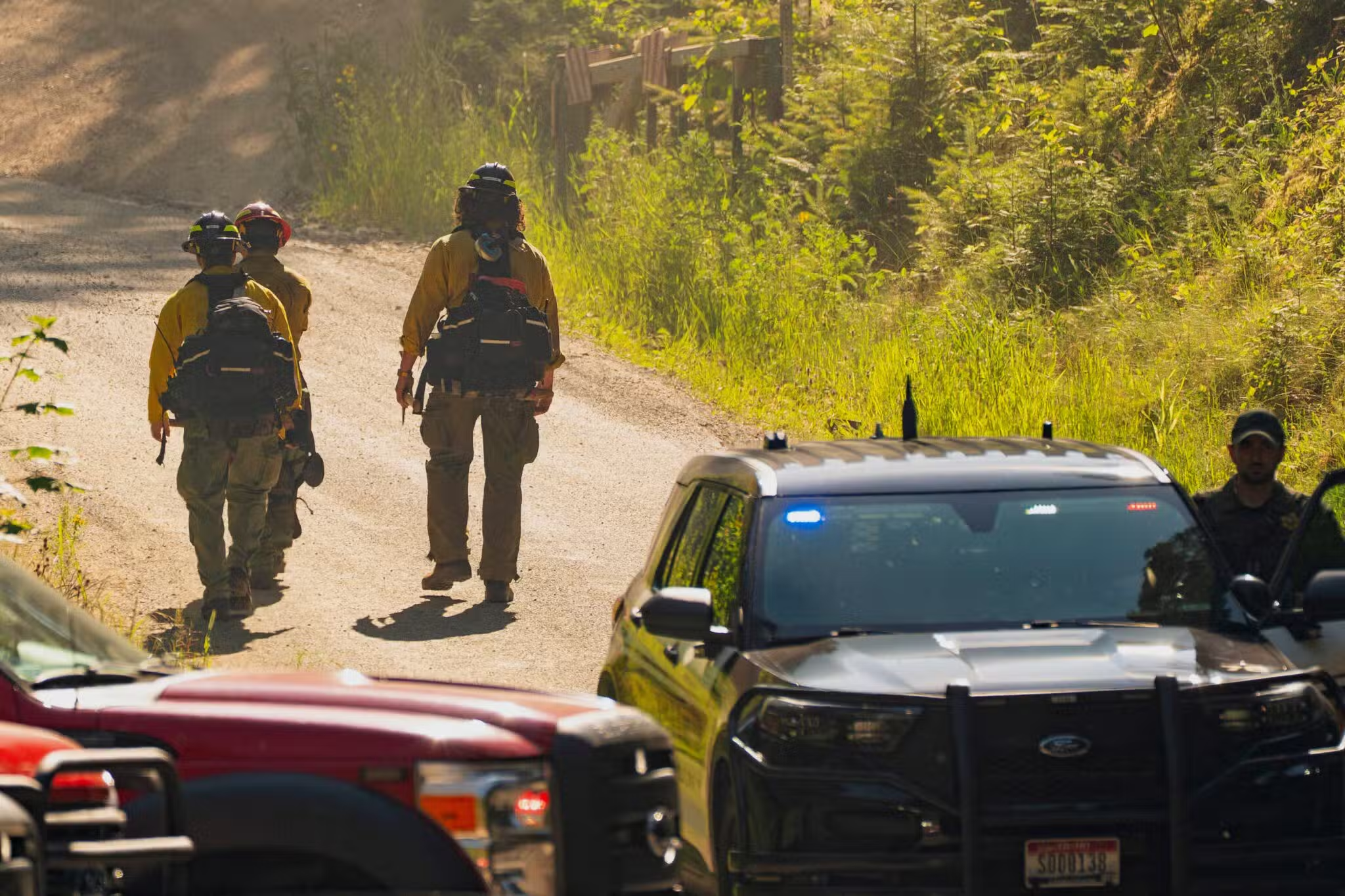They still are experiencing phenomenal growth. What can Catholic parishes learn?
In this age of ecumenism and interfaith dialogue, churches and religions are working together on social issues and learning from one another. As a Catholic theologian and parishioner, I have been able to learn a great deal from other faiths and yet remain loyal to Catholicism. One trend I think Catholic parishes could learn a lot from is megachurches.
If you haven’t heard of them, megachurches, by their very name, are large churches, many with multiple sites and attendance on any given Sunday in the thousands. A number of these churches serve 20,000 or more members. Typically, megachurches are Protestant, often evangelical, and nondenominational. About 10 percent of Christian churchgoers in this country attend megachurches, the growing churches in the United States.
So what are they doing that is driving this growth? In this article, I don’t imply criticism of Catholic parishes, but I want to point to five areas parishes can benefit from megachurches that are enjoying such phenomenal growth today. The specific areas are mission statements, welcoming, worship services, multiple services and ministries, and fund-raising.
The largest of the megachurches is the Lakewood Church, led by the well-known Pastor Joel Osteen in Houston, Texas. Currently there are about 44,000 in attendance. In Lake Forest, California, the popular Pastor Rick Warren leads the Saddleback Church of 20,000 members. The Chicago area is home to the Willow Creek Community Church. Here, Pastor Bill Hybels serves 22,500 members.
In my own city of Cincinnati, Ohio, there is Crossroads, a church of 20,000, now with five sites, and led by a young and dynamic Pastor Brian Tome. I know most about this church because my son, Brennan John Hill, works fulltime as the director of client services, and attends there with his wife, Allie, and their new son, Grant. I have attended there several times myself, and had the pleasure of speaking with Pastor Tome for this article. Now let’s look at some of the areas where Catholic parishes can learn from megachurches.
1) Mission Statements: Carefully Crafted and Lived
Megachurches are conscious of their history how they got started as a community and their specific mission. With careful discernment, the leadership monitors the evolution of their church’s mission, makes appropriate adjustments when necessary, and keeps the mission ever before the staff and church members.
Bill Hybel, the founder of Willow Creek Community Church, recalls that his vision for the church started in a New Testament class when he heard the first church described in Acts 2: 42-47. He dreamed of starting such a church where the members devoted themselves to Gospel teaching, fellowship, breaking of the bread, and prayer.
The members would be filled with awe at the many wonders performed by the apostles. They would share all their possessions and give to all those in need. Now, 40 years later, Willow Creek’s members hold up the earliest faith communities as their ideal for following Jesus as believers who serve others.
Mission statements vary, but Jesus and Gospel living seem to be at the heart of them all. Crossroads in Cincinnati wants to be “for anyone who wants to seek God from those exploring whether or not God even exists, to committed Christ-followers. We present biblical truths and show how they apply to our everyday lives. And we have fun while doing it.”
West Angeles Church of God in Christ “seeks to be a biblical ministry of excellence designed to encourage life transformation through our threefold purpose to evangelize, edify, and equip the whole person to serve the community and reach the world for Jesus Christ.”
For megachurches, these mission statements are much more than words on paper. They are the driving force behind the community, the goals which they seek to fulfill in their personal lives and ministries.
2) Welcoming: Meet and Greet
Recently, while shopping, I met a stock boy and, during our chat, he mentioned that he attended Crossroads. When I asked him why he attended there, he said: “I want to be happy in church and free to express my love of Jesus. It makes me happy to attend Crossroads because the people there welcome me, care about me, and encourage me to reach out to others.” He said he is proud that he was able to help in the recovery after Hurricane Katrina in New Orleans.
When one enters a megachurch, there is usually a feeling that you are entering into an exciting and vibrant community that is glad you are there. Most people come early for the service and gather in a large area, where they enjoy coffee and conversation. It is a time to meet people whom you know and to make new acquaintances. It is time to congratulate, console, share, inquire, and chat with others.
There might be the excitement of an anniversary, a birthday, a promotion. It is a time to share concerns about a young person being deployed, to show off a new baby, or to congratulate a teen whose team has just won an important game. Here, church is community, where compassion is extended to one who is going through a divorce or desertion by a spouse, and where hugs of concern are offered. One comes to realizes that this is what church is all about the people of God sharing their lives, their love, and their closeness to Jesus, the Son of God.
If you have brought children, they can be taken off to the area where little ones can have fun, be taught, and be cared for by a competent and trusted staff. Then, often, ushers will greet you and take you to the seat of your choice.
If you are a new face, you will be welcomed by a member and introduced to others. If you have been there awhile, your participation in the services, small group sessions in homes, local and international missions, and courses will have already connected you with many members.
3) Lively Services: Exciting Music and Powerful Preaching
The worship service in the megachurch is the central event of the community. It is lively with full participation, including gestures and manifestations of praise. Evangelicals are not shy about expressing their feelings in church, and during the services they express their worship of God and their love of Jesus both physically and verbally.
Music is an integral part of the service, and is robust and loud. Singing is accompanied by a group of musicians and led by someone who is full-voiced. There is nothing half-hearted about congregational participation!
The words to each song are clearly visible on a screen before the congregation. The songs vary, but are mostly songs of praise and petition that express both the thoughts and feelings of the community. (Catholics have their own style of songs, and some might not feel comfortable with gospel rock and rousing acclaim.)
Preaching is central to the service in these churches. Megachurches are led by pastors who are accomplished preachers, trained and experienced in reaching people of differing backgrounds with the Gospel message. Sermons are well prepared, contain vivid stories and striking examples, and are designed to inspire and move the congregation. Usually these sermons are recorded and made available to those unable to attend or for later review.
The sermons focus on Scriptures, and apply biblical teachings to the challenges of everyday life. Relevancy is the key word here. As one woman commented to me: “It always seems like the pastor has been sitting at our breakfast table. So often he is addressing the very real everyday issues that we face in our family or in our personal lives.”
The preachers are expected to have a deep understanding and lived experience of the Gospels, and be adept at connecting the Scriptures with the everyday challenges that people face in their lives. This speaks to the very purpose of church: to help people relate to God, deepen their faith and spiritual lives, and inspire them to serve others as Jesus did.
The congregation is encouraged to become attuned to these sermons through Bible study that is provided by the church, to attend small faith group discussions, and become active in some of the many ministries offered by the church. Spiritual transformation is the overarching goal building a closer relationship with Jesus and with all the people of God in the local community, as well as worldwide.
Those planning megachurch services recognize that variety is indeed the spice of life. Sometimes brief dramatizations might be included, or perhaps PowerPoint visuals or a film clip. A witness from someone who has just returned from a mission trip in a developing country might be offered, or someone who has recently experienced a conversion might share his or her story.
4) Multiple Services and Ministries
The organizational structures of megachurches can boggle the mind. Many of the churches have a staff of over 100 women and men, who are professionally trained and well paid, as well as hundreds more of active volunteers.
Some staff provide services to the internal needs of the church. There are pastors and assistant pastors, leaders who serve specific age groups in the community: children, preteens, teens, young adults, adults, and seniors. Special events are provided for each of these groups: celebrations, socials, trips, and fun activities. Megachurches give special attention to the young, recognizing a valuable investment in the future of their ministry. Catholic parishes can learn much from their success with young and young adult members.
Some staff members attend to communication with the members, through both personal interaction and social media. Facebook, YouTube, blogs, and Twitter are employed to communicate with members, especially the young.
Specific staff members focus on the website, the finances, or human resources. Staff or volunteers attend to the many means for spiritual growth, including healing sessions, baptisms, organizing small faith groups, marriage prepa-ration, and counseling. Others visit nursing homes, hospitals, or hospice, and attend to many other areas of pastoral care (e.g., groups for divorcing adults and sessions for survivors of sexual abuse). Some staff are responsible for the planning of worship services and music.
Specific staff members attend to projects outside the church: provide food for the poor and shelter to the homeless, partner with other churches to serve the elderly, support those returning from war, assist those with disabilities. Some organize retreats, while others facilitate mission trips to serve in developing countries. These megachurches take Jesus’ command to “go forth and teach all nations” very seriously.
5) Fundraising
Leaders of megachurches are not shy about raising money. Referring to the Hebrew Bible, they point to the custom of tithing, where 10 percent of one’s possessions are given to God. From this perspective, one’s material things are a blessing from God and a portion should be returned to God.
From another perspective, leaders of megachurches believe that, if their members experience pastoral care, spiritual transformation, a deepening of their faith, moving worship services, and opportunities to use their gifts in ministry, they will be willing to contribute the funds needed to provide these services. As further incentive to give, the leaders of these churches are transparent regarding the disbursement of donations. Members experience what their church is doing for them in their Christian lives and in the lives of their children. Most are willing to give generously to make sure these services continue and expand.
What Now?
Megachurches have been around for at least the last four decades in this country. They seem to be thriving and growing in their numbers: clear evidence that they have unique insights for building up the churches of the people of God.
Catholic parishes can learn much from these new models of Church. Parishes can develop specific mission statements and constantly keep these before the eyes and actions of the parishioners. Parishes can provide time and space where their members can go beyond anonymity, feel welcome, meet and greet others with their concerns, their good news and bad. Catholic communities can learn to better prepare their liturgies, incorporate more variety, or improve the music and singing.
Preachers can be reminded to prepare their homilies more carefully and see to it that their preaching more directly relates to the everyday lives of the people in the pews. With regard to multiple ministries, it is important that Catholic parishes improve their pastoral care, especially of the poor, teenagers, young adults, singles, married couples, people who can’t make it to church, those with disabilities, and the elderly.
Catholic parishes have many people with unique gifts and talents that can be better used to reach out to those in hospitals, hospice, or nursing homes. Parishes can learn from megachurches how to better organize small faith groups, Bible study, and expert sessions for married couples, the divorced and separated, and singles. More outreach can be developed for widows and widowers, gays, lesbians, bisexuals, and the transgendered. Much can be learned on how to serve the needy, the poor, and the homeless, both locally and internationally.
Finally, there are things to be learned from megachurches in the area of raising the money needed to support a professional and well-paid staff and to pay for the development of much-needed pastoral programs.
It is enlightening to realize that we all have the same goals: to imitate the life of Jesus and the early Christian communities. Thanks to megachurches for the new energy and passion with which you infuse this mission.








